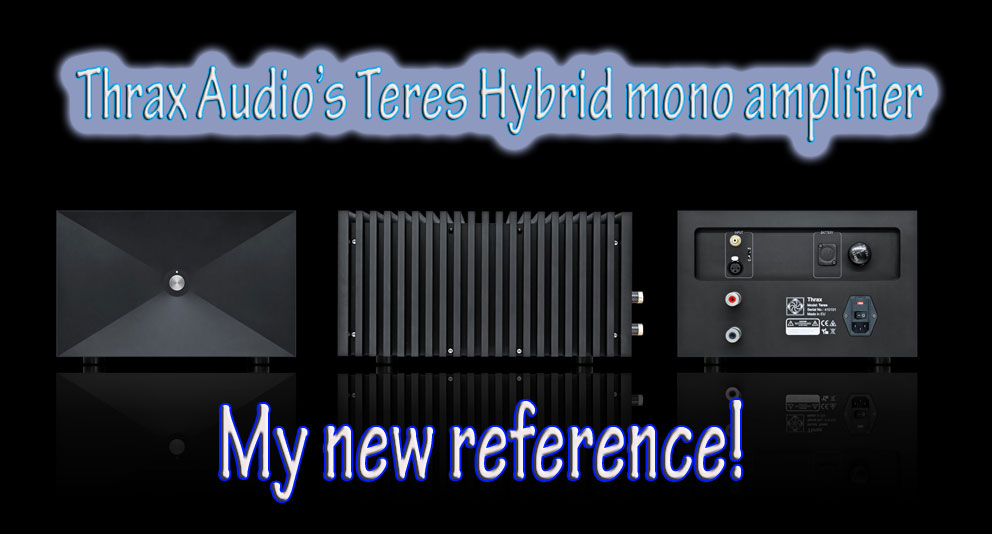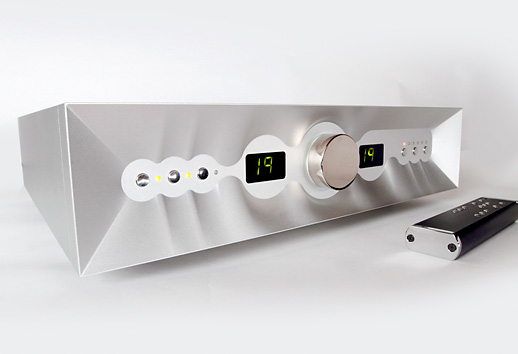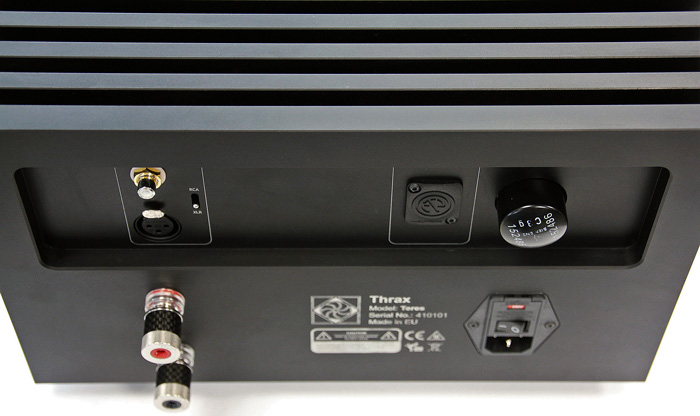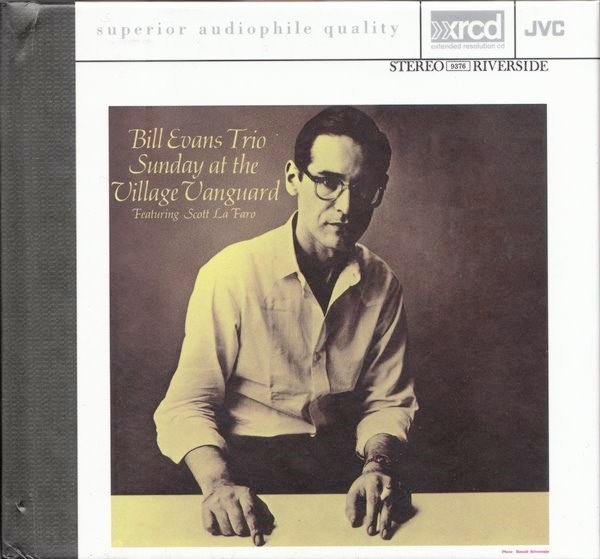Thrax Audio Teres Hybrid mono amplifier

 I’ve reviewed Thrax Audio equipment over the years and found it to be what I qualify as the cat’s meow. In fact, I admired its craftsmanship and musical prowess so much that I chose the Dionysos (photo below) as my new reference preamplifier over my Karan Acoustics preamp that had been my workhorse for nearly a decade. Rumen Artarski, founder and chief designer of Thrax Audio stated in many discussions I’ve had with him that “Thrax Audio components are highly addictive and once exposed to Thrax you are not the same anymore”. I was warned. Now I’ve got the Thrax bug. And that ain’t good!
I’ve reviewed Thrax Audio equipment over the years and found it to be what I qualify as the cat’s meow. In fact, I admired its craftsmanship and musical prowess so much that I chose the Dionysos (photo below) as my new reference preamplifier over my Karan Acoustics preamp that had been my workhorse for nearly a decade. Rumen Artarski, founder and chief designer of Thrax Audio stated in many discussions I’ve had with him that “Thrax Audio components are highly addictive and once exposed to Thrax you are not the same anymore”. I was warned. Now I’ve got the Thrax bug. And that ain’t good!

Thrax Audio’s latest product, the Teres Hybrid mono amplifier, is the subject of this review. Artarski told me about two years ago that he wanted to design an amplifier to sound as close as possible to his superb sounding Spartacus, with much lower voltage and no exposed tubes, to be used with more mainstream loudspeakers. Unfortunately, it is impossible to totally replicate the sonic signature of the Directly Heated Triodes and transformers used in the Spartacus. The Spartacus was designed primarily to drive efficient loudspeakers with maximum refinement. Keeping the sonic signature and specific presentation of Thrax gear in check, the Teres was created. Teres is an innovative design that still follows the “less is more” approach. Interestingly, Teres uses two separate and discrete output amplifiers completely independent of each other. Each consists of a single JFET/MOSFET and bias logic devices that were derived from computer and motor drive applications. Artarski is open minded and loves to think outside of the box.
To make the Teres perform as intended, Artarski resorted to a new type of shunt regulator circuit for the input stage and a radically new bias method for the output stage. Artarski utilizes battery bias in the input stage to provide the cleanest signal path for the ultimate C3g tube (a minimum lifespan of 10,000 hours!) that drives the phase splitting transformer. Solar cells are used to bias the output modules; any other implementation would have required some electrical connection between the output stages, but with the solar cells they are totally independent. Cleverly, silicon carbide diodes are used which have no reverse recovery. They make for cleaner switching (and are gaining momentum in audio). Two output stages feature very high input impedance and do not affect the sound character of the transformer loaded input stage. The Teres uses zero negative feedback in any form; the load has no connection with the input stage and cannot affect it. This gives stability of tonal color and a low level resolution. Teres uses interstage transformers to create two identical out of phase signals that feed the two output stages. The Teres output impedance was reduced and the output stage is now DC coupled to the speaker in order to handle the huge currents needed by inefficient loudspeakers. Lastly, the input stage is totally isolated and optimized for all the voltage gain defining the sonic character. Teres can output up to 250 Watts per side into 8 Ohms without a shift in sonic signature and keep all the low level “space” information at the same time. Teres incorporates a new type of shunt regulator circuit for the input stage and a radically new bias method for the output stage, utilizing, as I noted, clever solar cells to generate the floating bias voltage.

The Teres mono amps arrived in sturdy wooden crates with thoughtful carrying handles. First class all the way. Just as I remembered when reviewing the Spartacus and the Dionysos. Artarski is a perfectionist; every little details counts from the components he chooses to the final details in shipping as well. He wants to make sure everything is flawless. I concur. Removing the screws opens the wooden crates to reveal how professionally the amplifier was packed. Thrax’s build quality is impeccable and the Teres mono amps are exquisitely crafted; fit and finish is top notch. The chassis is stunningly finished in solid aircraft aluminum plates and the chassis looks as if it were carved out of solid aluminum blocks. Brilliantly, the outer surface of the chassis works as a heat sink. Indeed, the Teres never got above warm to the touch, even when listening to symphonic music at realistic levels. The Teres is manufactured using Thrax’s ultra state of the art CNC machinery. Cleverly, it has a stand-by switch, which doesn’t need to be turned off after each listening; it remains on stand-by. With my Karan a solid-state amp, I was able to leave it on 24/7. But with the Teres it gets even better; I could put the amps on standby, which turns off the tube and leave the circuits on. This way it sounds really good from the moment you start playing the next time. In fifteen minutes you are playing at the components full potential! On the back of the Teres there are both XLR inputs and RCA inputs and it is equipped with gorgeously crafted Furutech speaker binding posts and IEC.
Artarski told me that the Teres had been through 72 hours burn-in time in the factory to ensure sound quality and workmanship. However, he recommended 150 hours of burn-in time to fully settle it in after its arrival. I started listening right after a quick setup and right out of the box, I knew this was going to be something very special. As I logged on more hours the Teres started to gain more bloom and harmonic beauty. I’ve been looking to upgrade my Karan with a new reference and lately I’ve reviewed many great sounding reference amplifiers like the Concert Fidelity ZL-120V2SE, Reimyo KAT-777, and Franck Tchang’s ASI Grand Stereo. These are superb sounding reference amplifiers; especially the ASI, and they bettered my Karan in every possible way. But for some reason I didn’t pull the trigger; I wanted a little more tube magic in my new reference amplifier. My readers by now know that I’m not the type who jumps ship to the “flavor of the month.” My reference Karan amplifier served me well as it did everything just right, was built like a tank and was – most importantly – trouble free for nearly 10 years.
My reference system has evolved and improved, thanks to Rumen Artarski from Thrax Audio. I’m really loving my new Thrax Dionysos preamplifier which of-course has a symbiotic relationship with its brother in the Teres mono amps. Cables are the unbelievable sounding Enklein David cables throughout the system (review on the way). Also (lucky me), near the end of my Teres review, I received Thrax Lyra speakers which were quite a surprise both in terms of their arrival and performance.
Music to my ears
Normally I would let a component burn-in for about a month or so and then I would start to listen discreetly. Not with the Teres. My enjoyment started immediately but only got better as I put in more hours. The Teres possesses a very quiet and super transparent footprint and produced a mesmerizing three-dimensionality stage. So much in fact, the Teres sounded as though I moved my speakers further away. I didn’t hear any tubbiness but rather its performance was more graceful, gentle, and at ease. Images were more solid in a holographic space and were more liquid. The Teres’s solid-state output revealed itself more acutely, particularly on the bottom, where excess bloom gave way to greater dynamics, grip and speed. The amps had immediacy and were rhythmically alive producing a punchier, more direct life-like sound; yet in no way was the sound clinical, harsh or harmonically depleted in any frequency. This all resulted a seamless, top-to-bottom wall of sound by way of my Consensus Audio Engineering Conspiracy loudspeakers (and Thrax Lyra loudspeakers: which by the way produced a taut bottom-to-top transient response and an excellent overall speed without sounding etched or analytical).
 One listening session I was in the mood for a female vocalist. I put on my new reference vocalist, Melody Gardot’s “The Rain” from MY One and Only Thrill CD (Verve). I was introduced to her beautiful voice at last year’s Munich show in the Silbatone Acoustics room. They played a tract, on her CD entitle “Your heart is as black as Night”, and it was a thrilling experience. Silbatone Acoustics tube electronics from Korea showcased Melody’s astonishing voice through a majestic sized set of Westin Electric 1936 theater loudspeakers. Melody Gardot’s performance was beautifully rendered to the point that I was almost fooled she was in the room. As soon as I got back to the States, I ordered the album and since then it’s been added to my reference recordings. I put on “Baby I’m A Fool” and the music flowed exquisitely by the Teres mono amps not quite to the level heard by those Westin Electric, but still quite impressive. Vocal and instrumental timbres proved spot on, thanks to the Teres robust, full-bodied midrange. The Teres mono amps gave the music more life, the ability to deliver pace, while maintaining its natural character. As much as I love my Karan, the Teres mono amps performed better. The Teres reminded me of the Spartacus which I reviewed (here). Melody’s vocals startled me – first by the immediacy and solidity of the image – then by the improved complexity of her phrasings. Her sensual voice possessed a more tangibility, textures and tonality. Everything that I have come to expect from a Rumen Artarski design. Then some. In the end, the Tere’s presentation of this remarkable recording proved to be tonally, dynamically, and rhythmically more captivating than anything I’ve reviewed thus far. Quite a soul-stirring affair and what this hobby of musical appreciation is all about.
One listening session I was in the mood for a female vocalist. I put on my new reference vocalist, Melody Gardot’s “The Rain” from MY One and Only Thrill CD (Verve). I was introduced to her beautiful voice at last year’s Munich show in the Silbatone Acoustics room. They played a tract, on her CD entitle “Your heart is as black as Night”, and it was a thrilling experience. Silbatone Acoustics tube electronics from Korea showcased Melody’s astonishing voice through a majestic sized set of Westin Electric 1936 theater loudspeakers. Melody Gardot’s performance was beautifully rendered to the point that I was almost fooled she was in the room. As soon as I got back to the States, I ordered the album and since then it’s been added to my reference recordings. I put on “Baby I’m A Fool” and the music flowed exquisitely by the Teres mono amps not quite to the level heard by those Westin Electric, but still quite impressive. Vocal and instrumental timbres proved spot on, thanks to the Teres robust, full-bodied midrange. The Teres mono amps gave the music more life, the ability to deliver pace, while maintaining its natural character. As much as I love my Karan, the Teres mono amps performed better. The Teres reminded me of the Spartacus which I reviewed (here). Melody’s vocals startled me – first by the immediacy and solidity of the image – then by the improved complexity of her phrasings. Her sensual voice possessed a more tangibility, textures and tonality. Everything that I have come to expect from a Rumen Artarski design. Then some. In the end, the Tere’s presentation of this remarkable recording proved to be tonally, dynamically, and rhythmically more captivating than anything I’ve reviewed thus far. Quite a soul-stirring affair and what this hobby of musical appreciation is all about.
The Teres boasts and uncanny solid footing in both worlds: it has the right amount of tube glow and solid-state control and speed. The best solid-state amps generally produce greater transient speed and clarity, better dynamic contrast, and superior bass extension and control. Predominantly, solid-state designs deliver levels of transparency that few tube designs can accomplish. However, compared to the best tube designs, even the best solid-state amps can produce an overhyped transient attack not generally associated with live music and it can sound harmonically flat. And often, solid-state’s superior transparency is accompanied with an analytical and crunchy sonic aftertaste, with the leading edges a bit unnatural. Tube amps, on the other hand, are generally harmonically overripe and sound richer than life; they are slower and softer than life on transient notes, but they lack solid-state’s control on the bottom.
 I put on a familiar recording of Bill Evans’ Alice In Wonderland (JVCXR-0051-2) and the sound can be best described as liquid and beguiling. The Teres revealed a blacker background and an ability to paint vivid tonal colors. Paul Motian’s shimmering cymbal work came alive with incredible sheen and naturalness that was neither tube soft nor solid-state hard. Scott LaFaro’s double bass sounded as striking as I’ve ever heard on this recording. This legendary trio were natural and yet their attack never drew attention. The sustaining of their notes and their resonance decays were reproduced with an uncanny naturalness. Timbres are richly portrayed, with a density of color and warmth that makes even the best solid-state sound ever-so-slightly more mechanical. The Teres resolved tremendous amounts of detail without ever sounding overwhelmed, etched or analytical. The Teres has a remarkable ability and a realism that conveys a vividly convincing illusion of live instruments.
I put on a familiar recording of Bill Evans’ Alice In Wonderland (JVCXR-0051-2) and the sound can be best described as liquid and beguiling. The Teres revealed a blacker background and an ability to paint vivid tonal colors. Paul Motian’s shimmering cymbal work came alive with incredible sheen and naturalness that was neither tube soft nor solid-state hard. Scott LaFaro’s double bass sounded as striking as I’ve ever heard on this recording. This legendary trio were natural and yet their attack never drew attention. The sustaining of their notes and their resonance decays were reproduced with an uncanny naturalness. Timbres are richly portrayed, with a density of color and warmth that makes even the best solid-state sound ever-so-slightly more mechanical. The Teres resolved tremendous amounts of detail without ever sounding overwhelmed, etched or analytical. The Teres has a remarkable ability and a realism that conveys a vividly convincing illusion of live instruments.
 Listening to orchestral music once again presented the amplifier’s innate ability to paint a realistic three-dimensional picture of the live event. The Teres recreated a soundstage with floor-to-ceiling, wall-to-wall spaciousness that was seamless while never once oversized. It rendered large-scale symphonic works as well as the Karan with a seemingly limitless dynamic contrast along with a powerful and full bodied low-end. Dvorak’s New World Symphony No.9 in E Minor, Op.95, with Fritz Reiner conducing the Chicago Symphony Orchestra (JVCXR-024), produced enormous size, scale, and, more importantly, realistic dynamic swings. Whenever I cranked up the volume, the Teres kept its composure under whatever sonic onslaught that came down the cables.
Listening to orchestral music once again presented the amplifier’s innate ability to paint a realistic three-dimensional picture of the live event. The Teres recreated a soundstage with floor-to-ceiling, wall-to-wall spaciousness that was seamless while never once oversized. It rendered large-scale symphonic works as well as the Karan with a seemingly limitless dynamic contrast along with a powerful and full bodied low-end. Dvorak’s New World Symphony No.9 in E Minor, Op.95, with Fritz Reiner conducing the Chicago Symphony Orchestra (JVCXR-024), produced enormous size, scale, and, more importantly, realistic dynamic swings. Whenever I cranked up the volume, the Teres kept its composure under whatever sonic onslaught that came down the cables.
Conclusion
Rumen Artaski was right, the Thrax Audio is addictive and I need HELP because I am hooked. Yep, I pulled the trigger and purchased this review sample. Ladies and gentlemen, it’s that good a product. At $30k, It’s not inexpensive but the Teres hybrid mono amplifier brings so much to the table that, relative to other reference amplifiers in today’s market, it’s a bargain. They produced magic with every listen including a new reference of quiet, speed, and transparency. Timbre rightness coupled with color density and warmth is what ultimately won me over. Hats off to Rumen Artaski for creating a new benchmark so close to his superb sounding Spartacus, with lower voltage and no exposed tubes and can be used with mainstream loudspeakers. The Teres has earned my Stereotimes 2015 “Most Wanted Components’ award. Highly recommended!


key kim
Company Info:
Price: $30,000.00 per pair
Thrax Audio Ltd.
251 Okolovrasten pat, Delta Center
1766 Sofia, Bulgaria
Telephone: +359 2 988 95 55
FAX: +359 2 988 95 56
Mobile +359 888 561 269
E-mail: sales@thraxaudio.com
US Importer: Audio Union International
USA Head Office and Master Distributor for USA
(North and South America) is based in Kansas City MO USA
Web site: http://audio-union.com/index.php
Contact: David Kleinbeck
Address: 2405 NE Cross Creek Ln
Lee’s Summit, MO 64068 USA
Phone: +1 816 875 6519
Email: Dave@audio-union.com
Stereo Times Masthead
Publisher/Founder
Clement Perry
Editor
Dave Thomas
Senior Editors
Frank Alles, Mike Girardi, Russell Lichter, Terry London, Moreno Mitchell, Paul Szabady, Bill Wells, Mike Wright, and Stephen Yan,
Current Contributors
David Abramson, Tim Barrall, Dave Allison, Ron Cook, Lewis Dardick, John Hoffman, Dan Secula, Don Shaulis, Greg Simmons, Eric Teh, Greg Voth, Richard Willie, Ed Van Winkle, Rob Dockery, Richard Doran, and Daveed Turek
Site Management Clement Perry
Ad Designer: Martin Perry





Be the first to comment on: Thrax Audio Teres Hybrid mono amplifier